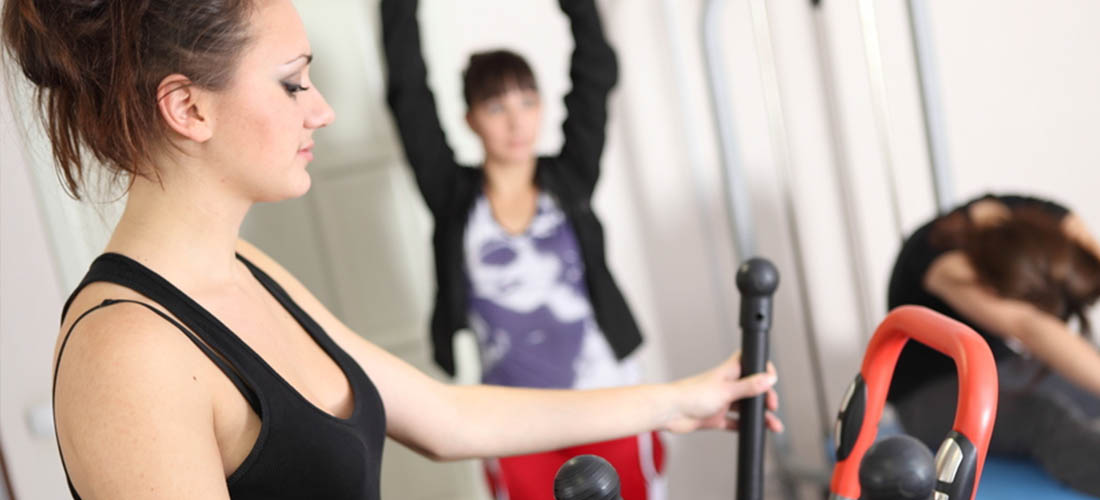Contents
A Little about Type 1 Diabetes Mellitus
Type 1 DM, previously known as juvenile diabetes or insulin dependent diabetes mellitus (IDDM), is usually first diagnosed during childhood or adolescence. Your body’s inability to produce enough insulin screws up your metabolism.
Insulin is the hormone that lowers and normalizes your blood glucose levels after meals and unfortunately, there is no other hormone to carry the flag. Thus, children, and adults alike, are forced to manage their glucose levels with regular insulin injections or insulin pumps. There is a silver lining though, especially for people who have a strong heart and a willing mind. With proper control of diet, exercise and insulin doses you can go on to live a long, healthy life.
(Note : Since glucose is the primary sugar responsible for metabolism, the terms ‘blood sugar’ and ‘blood glucose’ have been used interchangeably in this article.)
Why does your Blood Glucose go down with Exercise?
If you have Type 1 DM, you are very likely to be on intensive insulin therapy to keep blood glucose under control. Even though this keeps your engine running throughout the day, your glucose levels fall rapidly during exercise, when the body burns carbohydrates at a faster pace.
You may be thinking – if such an intensive therapy causes problems for me during exercise, why in the world am I on it in the first place?
The answer is simple – the tight glucose control afforded by such therapy is very important to prevent long term complications from diabetes.[1]
Type 1 DM and Exercise
If you have Type 1 DM, finding the right balance between exercise and blood sugar can be a pain. Some people avoid any kind of workout altogether, fearing it might bring the blood sugar levels too far down. But, I implore you to that regular exercise is important to maintain a healthy and active lifestyle, even in Type 1 DM, even if your weight is under control.
Careful planning is the key here. Regular monitoring of blood sugar levels, before, during and after any kind of physical activity can help you power through any workout.
Why should you exercise?
Besides the usual benefits of exercising like weight management and decrease in body fat percentage, there are several other benefits specific to diabetics:[2]
- Increase in insulin sensitivity: With higher insulin sensitivity, your body will respond better to whatever insulin it produces.
- Reduction in daily insulin doses: This follows from the above point. As your body becomes more sensitive to insulin, it requires less insulin to do its job.
- Lower chances of sudden increase in blood glucose after meals: Less insulin means your body can’t cope with the carbohydrate overload after a meal and your blood sugar shoots up. These peaks can be blunted with regular exercise. And more importantly, there will be fewer episodes of diabetic ketoacidosis (very high blood glucose + ketones).
What’s more, the common misconception that if you are diabetic, you have to work harder to match your friends’ fitness levels, is quite incorrect. Diabetic children and adolescents have similar improvements in their lung and heart functions and their overall fitness as their non-diabetic counterparts.[3]
How Much Should You Exercise?
Every research and every health agency have their own recommendations, but generally people of all ages should include at least 30 minutes of moderate intensity exercises (eg. brisk walking) on most days of the week.[4]
Physical activities that have a more controlled calorie consumption rate such as jogging, running, cycling and swimming among other activities, are preferred recommendations for Type 1 diabetics. This makes it easier for you to judge the required doses of insulin and carbohydrates.
However, children should be allowed to take part in any sport they want provided that the parents help them to closely monitor their blood glucose levels.
Before you start
Your main objective before starting any kind of physical activity is to know your body’s response to exercise and its effect on your blood sugar level.
Ask your doctor to give you a complete physical exam and clearance for exercise.
Make sure you have had a meal 1-3 hours before exercise. If you have skipped one of your regular meals before your workout, then exercising is not a good idea. The earlier recommendations of simply loading up on carbohydrates before exercise are no longer applicable.
You should have had adequate amount of fluids before starting exercise. Keep water by your side.
Check your blood sugar before starting any exercise.
If the level is below 100 mg/dL,[5] then take a small amount (15-20 g) of carbohydrate snack or drink like an energy bar or some juice before starting. This will increase your blood sugar levels sufficiently enough to prevent hypoglycemia (drop in blood sugar) during or after exercise.
If the level is high (above 270 mg/dL) check your blood or urine for ketones (just like blood glucose monitors, ketone monitors are readily available). If you find ketones, do not exercise till the levels are normalized.
Make sure you have glucose tablets or a sweet beverage (juice, sports drink or lemonade) with you before beginning. It is always better to be prepared for a drop in blood sugar.
During Exercise
If you are starting new and you have not yet judged how your sugar levels fluctuate with exercise, you should first start with a low intensity activity and gradually increase the duration of your workouts by 5-10 minutes every few days.
Measure your blood glucose every 30 minutes during exercise.
Do not solely rely on symptoms of hypoglycemia (palpitations or racing pulse, excessive sweating, confusion, dizziness, numbness, tingling sensations over body or anxiety) to tell you when to stop or when to check your blood glucose.
Exercise, especially vigorous exercise, blunts your body’s response to low blood sugar.[6][7][8] In other words, your blood sugar may already be quite low well before you have any symptoms.
If your blood sugar levels fall below 100 mg/dL, stop immediately and have the glucose tablet or drink you have with you.
Check your blood levels again before restarting.
After exercise
Continue to monitor your blood glucose at least every 2 hours.
If you find yourself unable to complete your full workout due to hypoglycemia, then there are 2 things you can do:
- Decrease your pre-meal insulin dose, or
- Increase the amount of carbohydrates in your meal
The latter is not a good option if you are trying to lose weight or bring your long term blood glucose levels under control since most of the calories burnt during your workout will be the ones you consumed extra.
It is a good idea to start by reducing your pre-exercise insulin dose by 25% to 50% depending on how vigorous and how long your workout is going to be.[9][10]
Even if you find that your blood sugar is normal or above normal after the workout, do not ease off on your glucose monitoring. You still need to be careful about a phenomenon called late-onset postexercise hypoglycemia (LOPEH). In LOPEH, glucose levels go down 6-15 hours even after you have stopped your exercise.
This happens as a result of several factors:
- Replenishment of glycogen stores which uses up all the glucose in the blood,
- Increase in insulin sensitivity after exercise, and
- Inadequate production of stress hormones (glucagon, cortisol, growth hormone, epinephrine, etc.) which raise the blood glucose if it falls too low[11]
Adjusting the dose of insulin especially at night and taking carbohydrates that provide a slow steady release of energy are very helpful to prevent LOPEH. Parents can give their children whole milk or sports drinks during and after exercise.[12] A complex carbohydrate snack made of whole grains or corn starch is also helpful immediately after exercise.
Blood Glucose Levels May Even Rise!
If you had a vigorous workout, exercised for longer than an hour or took part in competition sport, it is possible that your blood glucose levels may actually go up! Conflicting, right? But nonetheless true!
This happens due to the production of stress hormones in the body which increase the circulating glucose in the blood for 30-60 minutes.[5] Yes you are right – the same stress hormones that go into hiding and cause LOPEH, may show up with vengeance after an exhausting workout and play racquetball with your glucose levels.
This situation is especially dangerous as it can quickly cause dehydration and make your blood more acidic leading to confusion and impaired judgment.
If you have previous experience with this situation, you probably know how to correct it with a large insulin dose. However, this can be risky for if you are a beginner as you could end up going into hypoglycemia once the stress hormones clear out. It is better to immediately consult your doctor in such an event.
For the initial few workouts, you have to use this trial and error method to find the perfect balance between your insulin dose and carbs to make sure you are able to go through your entire session.
Once you have figured out how your body reacts to exercise and you settle into a routine, it will become easy for you to go through your workouts or sport activities without a troubling hypoglycemic episode.
In spite of close control, there is always a possibility that the fluctuations in your blood sugar level are too random for you to manage. Always consult your doctor in such a scenario.
Go on and beat Type 1 Diabetes!
References
[1] The effect of intensive treatment of diabetes on the development and progression of long-term complications in insulin-dependent diabetes mellitus. The Diabetes Control and Complications Trial Research Group. N Engl J Med. 1993 Sep 30;329(14):977-86. PubMed PMID: 8366922. ^Back to Top^ [2] Riddell MC, Iscoe KE. Physical activity, sport, and pediatric diabetes. Pediatr Diabetes. 2006 Feb;7(1):60-70. Review. PubMed PMID: 16489976. ^Back to Top^ [3] Larsson Y, Persson B, Sterky G, Thoren C. Functional adaptation to rigorous training and exercise in diabetic and nondiabetic adolescents. J Appl Physiol. 1964 Jul;19:629-35. PubMed PMID: 14195571. ^Back to Top^ [4] U.S. Department of Health and Human Services. Physical Activity and Health: A Report of the Surgeon General. Atlanta, GA: U.S. Department of Health and Human Services, Centers for Disease Control and Prevention, National Center for Chronic Disease Prevention and Health Promotion, 1996. (pdf). ^Back to Top^ [5] American Diabetes Association (www.diabetes.org). ^Back to Top 1^ ^Back to Top 2^ [6] Galassetti P, Mann S, Tate D, Neill RA, Costa F, Wasserman DH, Davis SN. Effects of antecedent prolonged exercise on subsequent counterregulatory responses to hypoglycemia. Am J Physiol Endocrinol Metab. 2001 Jun;280(6):E908-17. PubMed PMID: 11350772. ^Back to Top^ [7] Galassetti P, Mann S, Tate D, Neill RA, Wasserman DH, Davis SN. Effect of morning exercise on counterregulatory responses to subsequent, afternoon exercise. J Appl Physiol (1985). 2001 Jul;91(1):91-9. PubMed PMID: 11408418. ^Back to Top^ [8] Sandoval DA, Guy DL, Richardson MA, Ertl AC, Davis SN. Effects of low and moderate antecedent exercise on counterregulatory responses to subsequent hypoglycemia in type 1 diabetes. Diabetes. 2004 Jul;53(7):1798-806. PubMed PMID: 15220204. ^Back to Top^ [9] Campbell, M., Walker, M., Trenell, M., Jakovljevic, D., Stevenson, E., Bracken, R., Bain, S., & West, D. (2013). Large Pre- and Postexercise Rapid-Acting Insulin Reductions Preserve Glycemia and Prevent Early- but Not Late-Onset Hypoglycemia in Patients With Type 1 Diabetes Diabetes Care, 36 (8), 2217-2224 DOI: 10.2337/dc12-2467. ^Back to Top^ [10] Rabasa-Lhoret R, Bourque J, Ducros F, Chiasson JL. Guidelines for premeal insulin dose reduction for postprandial exercise of different intensities and durations in type 1 diabetic subjects treated intensively with a basal-bolus insulin regimen (ultralente-lispro). Diabetes Care. 2001 Apr;24(4):625-30. PubMed PMID: 11315820. ^Back to Top^ [11] MacDonald MJ. Postexercise late-onset hypoglycemia in insulin-dependent diabetic patients. Diabetes Care. 1987 Sep-Oct;10(5):584-8. PubMed PMID: 3677976. ^Back to Top^ [12] Hernandez JM, Moccia T, Fluckey JD, Ulbrecht JS, Farrell PA. Fluid snacks to help persons with type 1 diabetes avoid late onset post exercise hypoglycemia. Med Sci Sports Exerc. 2000 May;32(5):904-10. PubMed PMID: 10795779. ^Back to Top^
– Dr. Praful Schroff







Comments are off this post!